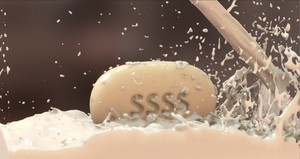Information
- Publication Type: Journal Paper with Conference Talk
- Workgroup(s)/Project(s):
- Date: June 2015
- Journal: Computer Graphics Forum
- Volume: 34
- Number: 6
- Location: Darmstadt
- Lecturer: Christian Freude
- ISSN: 1467-8659
- Event: Eurographics Symposium on Rendering (EGSR)
- Conference date: 23. June 2015 – 26. June 2015
- Pages: 188 – 197
- Keywords: separable, realtime rendering, subsurface scattering, filtering
Abstract
In this paper we propose two real-time models for simulating subsurface scattering for a large variety of translucent materials, which need under 0.5 milliseconds per frame to execute. This makes them a practical option for real-time production scenarios. Current state-of-the-art, real-time approaches simulate subsurface light transport by approximating the radially symmetric non-separable diffusion kernel with a sum of separable Gaussians, which requires multiple (up to twelve) 1D convolutions. In this work we relax the requirement of radial symmetry to approximate a 2D diffuse reflectance profile by a single separable kernel. We first show that low-rank approximations based on matrix factorization outperform previous approaches, but they still need several passes to get good results. To solve this, we present two different separable models: the first one yields a high-quality diffusion simulation, while the second one offers an attractive trade-off between physical accuracy and artistic control. Both allow rendering subsurface scattering using only two 1D convolutions, reducing both execution time and memory consumption, while delivering results comparable to techniques with higher cost. Using our importance-sampling and jittering strategies, only seven samples per pixel are required. Our methods can be implemented as simple post-processing steps without intrusive changes to existing rendering pipelines.https://www.youtube.com/watch?v=P0Tkr4HaIVk
Additional Files and Images
Additional images and videos
Additional files
 paper:
Full paper preprint.
paper:
Full paper preprint.
 supplementary1:
Additional explanations and results of the method.
supplementary1:
Additional explanations and results of the method.
 supplementary2:
Kernel plots.
supplementary2:
Kernel plots.
Weblinks
BibTeX
@article{Jimenez_SSS_2015,
title = "Separable Subsurface Scattering",
author = "Jorge Jimenez and Karoly Zsolnai-Feh\'{e}r and Adrian Jarabo
and Christian Freude and Thomas Auzinger and Xian-Chun Wu
and Javier van der Pahlen and Michael Wimmer and Diego
Gutierrez",
year = "2015",
abstract = "In this paper we propose two real-time models for simulating
subsurface scattering for a large variety of translucent
materials, which need under 0.5 milliseconds per frame to
execute. This makes them a practical option for real-time
production scenarios. Current state-of-the-art, real-time
approaches simulate subsurface light transport by
approximating the radially symmetric non-separable diffusion
kernel with a sum of separable Gaussians, which requires
multiple (up to twelve) 1D convolutions. In this work we
relax the requirement of radial symmetry to approximate a 2D
diffuse reflectance profile by a single separable kernel. We
first show that low-rank approximations based on matrix
factorization outperform previous approaches, but they still
need several passes to get good results. To solve this, we
present two different separable models: the first one yields
a high-quality diffusion simulation, while the second one
offers an attractive trade-off between physical accuracy and
artistic control. Both allow rendering subsurface scattering
using only two 1D convolutions, reducing both execution time
and memory consumption, while delivering results comparable
to techniques with higher cost. Using our
importance-sampling and jittering strategies, only seven
samples per pixel are required. Our methods can be
implemented as simple post-processing steps without
intrusive changes to existing rendering pipelines.
https://www.youtube.com/watch?v=P0Tkr4HaIVk",
month = jun,
journal = "Computer Graphics Forum",
volume = "34",
number = "6",
issn = "1467-8659",
pages = "188--197",
keywords = "separable, realtime rendering, subsurface scattering,
filtering",
URL = "https://www.cg.tuwien.ac.at/research/publications/2015/Jimenez_SSS_2015/",
}


 paper
paper